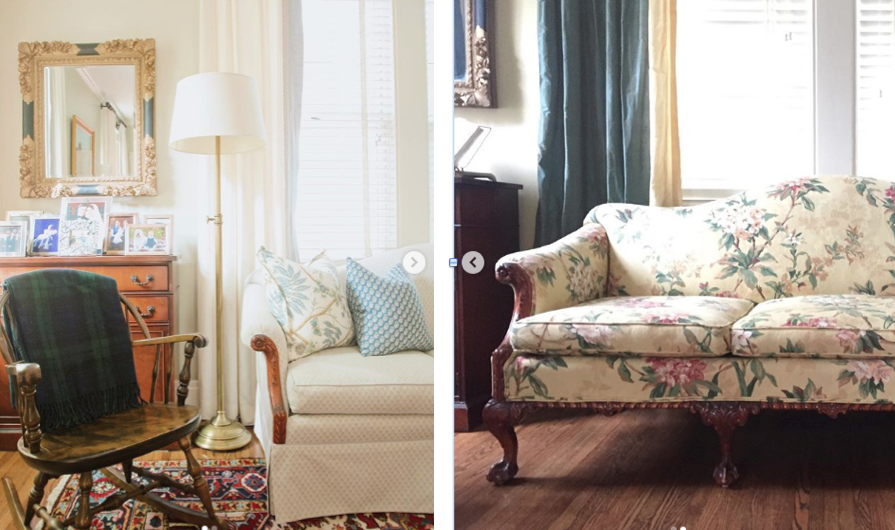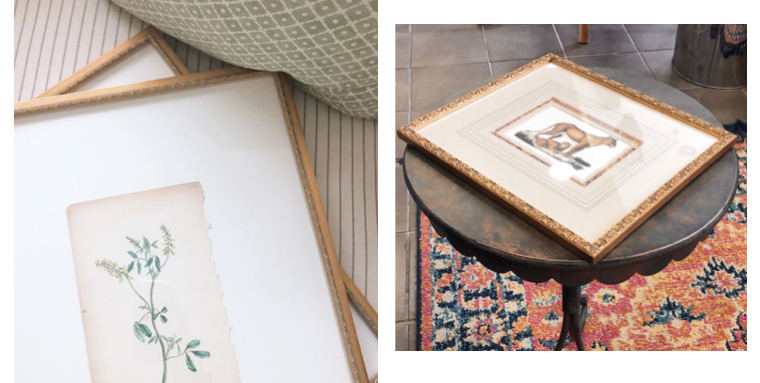Things You Need To Know : Design Edition
Anytime I’ve started a conversation with any of my friends who work in finance and they started detailing the Excel spreadsheets that they work in all day I feel like they are speaking a foreign language - anyone else with me? My immediate thought is “thank goodness that people like you exist… to help people like me".” Well, I also understand that to a lot of you out there… the “rules” of interior design can feel like a mystery too. We all excel at different things and so today I am here to answer some of the questions that you guys have been asking me for a while! I might even answer a few questions that you didn’t even know you had!
Custom jute rug ordered through Sarah Catherine Design
Natural Fiber Rugs : What’s The Difference Between Jute & Sisal?
We all love the look of natural fiber rugs, don’t we? I love using them to cover large floor spaces either by themselves or layered with another flat weave pattern rug on top! But not all natural fiber rugs are created equal! Here is what you need to know:
Sisal - this fiber is pretty tough and very scratchy. They make great hallway or stair runners because they can be “grippy” but given their rough texture I would not use them in a bedroom or a living room where you will definitely want to walk around barefoot often.
Jute - I prefer jute over sisal in most cases. It provides a very similar look to sisal, but is much more soft underfoot so it can be used in any setting. Jute is what we used in the living room pictured above.
All natural fiber rugs are going to shed some… especially at first, before they are nice and broken in. However, the higher the quality of the rug, the less shedding issues you’ll have. Your get what you pay for! - Also, NEVER vacuum these! The rotating mechanism in the vacuum will destroy the weave in the fibers. Instead you should sweep the rug as needed.
We recovered this camel back antique sofa for a Nashville Client. (< After | Before >)
Reupholstery: Myth vs Reality
Something that I run across quite often with clients and friends is the belief that recovering an existing piece of furniture - or buying something at a good deal from a consignment shop or estate sale is “going to save a ton of money”. Unfortunately, that is a myth.
I hate to crush your hopes and dreams but in most cases recovering those ugly chairs that you bought from an antique mall is going to end up costing almost as much as buying new ones. Let’s do the math: (and I’ll even be conservative on the dollar amounts here)
Let’s say you buy a pair of basic arm chairs for $150 each - cheap right!? But they have terrible fabric on them…
You will need about 8 yards of fabric per chair (if both are of average size and fully upholstered - as in not a wood frame with just an upholstered cushion)
A reasonable upholstery grade fabric costs about $35/yard. X 16 yards (8/chair) = $560 of fabric.
Now you need someone to upholster those chairs, which in many cases is going to be anywhere from $400 -$500 per chair. Lets just say it costs $400 for this equation. So $800 total.
You now own a pair of refurbished chairs for $830 per chair. This is on the conservative side too, it can easily be more expensive than this depending on the amount of yardage and labor you need, not to mention the cost of the items originally.
I realize that $830 per chair might still be less expensive that some brand new chairs - but the idea that the process is going to be “really cheap” just isn’t true. Now, don’t get me wrong - I am a HUGE fan of custom upholstery, but I think there are a few parameters to consider.:
Is the piece you want to reupholster really special? Is it a family heirloom or does it have any sentimental value?
Does the piece have a really unique feature to it? Such as an ornate frame, or a really cool overall shape or tufting of some kind? For example: we recovered my client’s antique sofa (above) because of the frame shape and style. The camel back and the ornate curved arms were unique and worth saving - we added the skirt because the clawfoot legs were a little much and we wanted a more clean look.
Is the fabric that you have in mind really special? Have you had your eye on a certain fabric forever and really want to use it in your space? Especially if the fabric itself is expensive, then finding a good deal on the piece to recover could help with the bottom line - because that same fabric would be just as expensive on a brand new piece too.
Does the piece need full upholstery or just part of it? Is it fully covered in fabric or does it have a wood frame and just needs a cushion recovered? The less upholstery an item needs the less yardage and labor costs it will incur.
These are just some things to consider when recovering older furniture. Don’t do it just to save a buck, because you wont save as much as you think. Hold off on recovery until you have a really special or unique piece that you can give a new life to! Then it will be go time!
How Can I Get My Pillows To Look Less Flat?
Have you ever noticed that designer’s pillows always seem really nice and full - plus they hold that nice “chop” in the center? Well, its all about the insert. Unless your pillows are for outdoor use (in which case you need an outdoor grade poly fill insert) you need to use down filled pillow inserts to achieve that fullness we all love. Down will also hold its plump shape better if you do decide that your pillows need a little fluffing and a chop after some use. The last hint is to order a pillow form size that is slightly larger than your pillow cover. So if you have a 20” pillow cover then you would buy a 21” insert.
What Do I Need To Know About Hanging Draperies?
There is a LOT to unload when it comes to draperies, and understandably so… draperies really can make or break a room and custom ones can add up so it’s worth getting them right the first time!. I actually wrote an entire blog post pertaining to this topic called Draperies 101 that I will link to below. But here are the bullet points:
I typically always hang drapery rods at least 6” above the top of your window trim. In most cases I air more on the side of 8”-12” above the trim, depending on how high the windows and the ceilings are. The main thing is that you don’t want to hang your rod right on top of the trim because it will make your windows look squatty.
Be sure to purchase a rod that will extend beyond the window frame at least a good 4”-6” on wither side of the window. Again, extending the rod will make the window feel bigger, but it will also allow you to push the draperies to each side of the window without totally blocking most of the light.
Check out my full post “Draperies 101” here for further explanation on hanging draperies, the parts and pieces of drapery hardware (and when to use what type of brackets), explanations about the different pleating styes and more.
How Do I Hang A Gallery Wall?
This is another question that I get asked a good bit…. how do I hang a gallery wall? It can definitely be intimidating - even I get nervous about it sometimes. I actually wrote an extensive tutorial post going step by step how to do it - there is a pretty simple method that, if followed correctly, will make hanging a gallery wall much easier than you think! My main advice is to measure twice and nail once! Ha!
You can read the full post here: How To Hang A Gallery Wall
Framing Hack
Speaking of gallery walls… custom artwork can be expensive… but if you know where to look you can pull off the custom framing look for a fraction of the price! The next time you are at an estate sale or a consignment store - or even browsing Etsy - keep you eye out for antique prints that are in great frames. Even if the artwork itself is terrible (aka the lion print above, haha), the frame and the glass might be beautiful! And thats the expensive part. Once you have a great frame, all you need is a piece of art and a new mat!
H A P P Y D E C O R A T I N G
xo, Sarah









